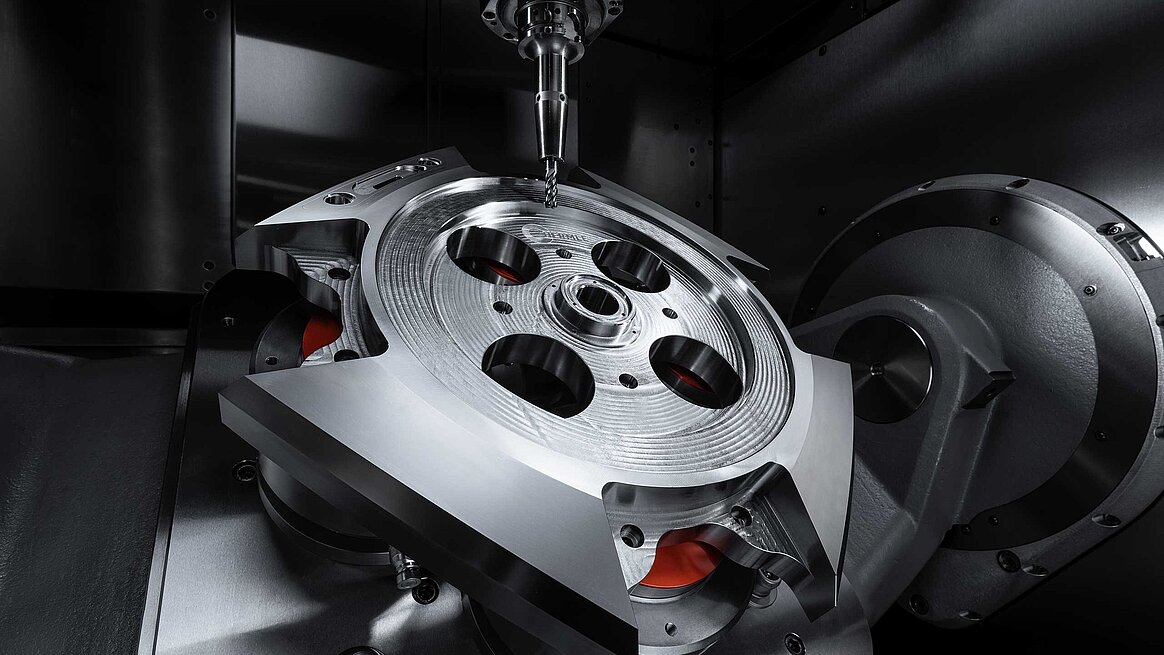End mills and Hermle
As you can imagine, end mills are vital equipment in any HERMLE machining centre. But what factors determine the quality of an end mill? Why are some end mills made of HSS and others of tungsten carbide? What is tungsten carbide anyway? Are there even harder cutting materials available that are even more robust? What about applications like drilling, face milling, profiling, chamfering and deburring? Or smoothing and roughing? What mills are best for which applications and when? Read our article below for answers to these questions and more.

End mills: the basics
So let’s begin with the fundamentals. What is an end mill exactly? It’s a tool – a mill, of course – used in metalworking and in numerous industrial applications, as it is at HERMLE, although it can be used for processing wood and plastic too. It can be deployed in any application where a workpiece needs to be stripped of excess material, forming chips in the process, and then cut into shape. Unlike side milling, where the cutting tool moves perpendicularly to the surface of the workpiece to remove material from its side, the cutting tool in end milling rotates around its axis and moves axially along the length of the surface of the workpiece to remove material from its end. Generally speaking – or at HERMLE, at least – the end mill is clamped in a machine such as a CNC milling centre.
So what does an end mill look like? It consists, firstly, of a cylindrical shaft that can be clamped into the chuck or milling spike on the milling machine and, secondly, a milling head that can have different shapes, bits and cutting edges depending on the requirements and the task in hand – whether slot milling, pocket milling, face milling, contouring or other milling applications. But more about that later.
While square end mills are the most commonly used type, end mills come in not only different shapes and with different cutting edges but also in different sizes and designs capable of handling the tasks and requirements outlined above on either a large or small scale. Just to give you some idea of the scale we’re talking about here, one HERMLE C 62 / C 62 U MT can machine workpieces with a mass of up to 2,500 kg, while the C 12 can be used for finishing cubic workpieces of up to 100 kg. So these factors also determine the size of the mills and their diameter – and, of course, the material they are made of. Potential materials include high-speed steel (HSS), carbide (tungsten carbide) or one of a variety of special cutting materials such as ceramic, which is both extremely hard and wear resistant. Because the challenge is ultimately to find the right fit, the material used for the end mill depends on the material of the workpiece to be machined. It has to be harder than the material that it’s supposed to shape – an old wisdom of the metallurgy industry.
Different sizes? Different designs? Old wisdoms of the metallurgy industry? This sounds all a bit vague and ‘rule of thumb’, a world away from advanced, high-precision, CNC-programmed machining technology. So for all those who are curious: yes, there is a standard for end mills with cylindrical shafts – it’s called ‘DIN 844’ and defines all the relevant dimensions and technical delivery conditions.
For further information visit: https://www.hermle.de/en/news-media/news/detail/end-mill/
News Categories
- » NEWS HOME
- » Automation & Robotics
- » Industry 4.0
- » Material Handling
- » Sensors
- » Quality & Testing
- » Machine Vision
- » Laser & Optics
- » Metalworking
- » Motion Control & Drives
- » Hydraulics & Pneumatics
- » Process Industry
- » Renewable Energy
- » Agriculture
- » Home & Office Furniture
- » Additive Manufacturing
- » Environmental Tech




